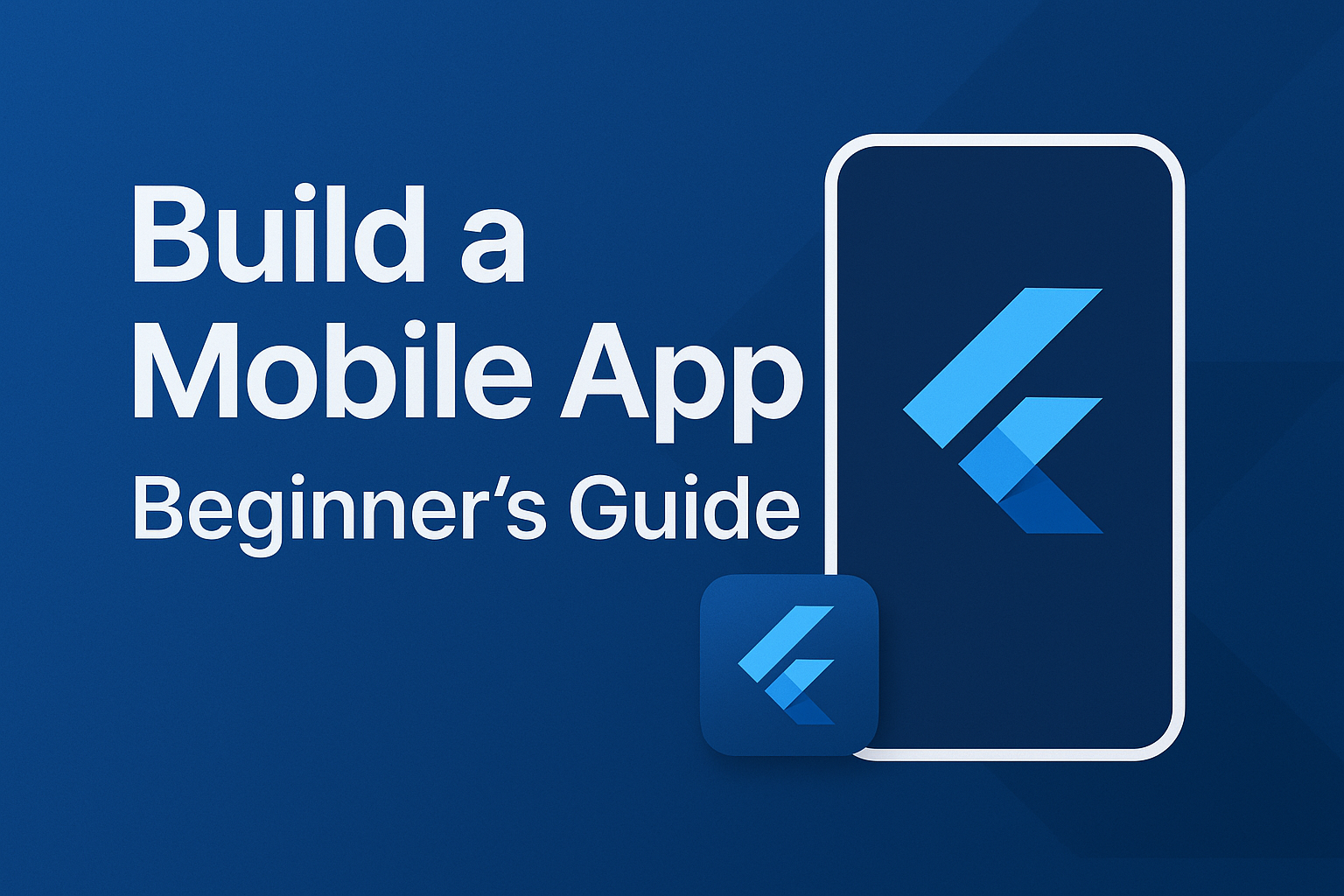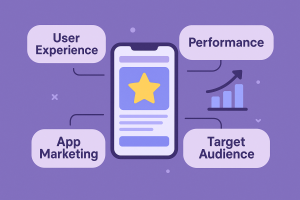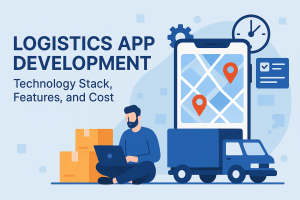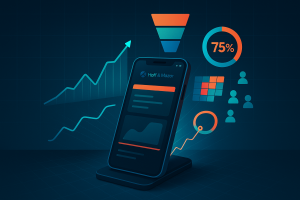Flutter has quickly emerged as a favorite framework among developers due to its ability to build high‑quality, cross‑platform mobile apps using a single codebase. Whether you’re looking to launch your first mobile project or scale your existing app development skills, Flutter offers an impressive toolkit, extensive libraries, and an efficient workflow that can help you bring your ideas to life. In this comprehensive guide, we’ll walk you through how to build a mobile app with Flutter—from setting up your development environment and understanding Flutter’s widget system to tackling common pitfalls and exploring best practices in app architecture.
Throughout this article, we’ll dive deep into practical steps and tips essential for beginners and those upgrading their skills alike. Additionally, we’ve seamlessly integrated valuable resources on topics like app architecture, mobile app development basics, and common development mistakes. Let’s explore the world of Flutter and learn how to build powerful, scalable apps together.
1. Introduction to Flutter
Flutter is an open‑source UI toolkit developed by Google for building natively compiled applications for mobile, web, and desktop from a single codebase. With its reactive framework and widget‑based approach, Flutter simplifies the process of creating beautiful and functional mobile apps. Its popularity has grown tremendously thanks to features like hot reload, which dramatically speeds up the development process by letting you immediately see changes as you code.
Flutter’s ability to deliver both high performance and expressive user interfaces has positioned it as a leading choice for developers aiming to streamline cross‑platform mobile development. Whether you’re a new developer looking to explore mobile app creation or an experienced engineer wanting to improve your workflow, this guide is designed to provide you with actionable steps and industry insights.
2. Why Build a Mobile App with Flutter?
There are many compelling reasons to choose Flutter as your mobile app development framework, especially when your goal is to build a robust, cross‑platform app.
Cross-Platform Capability
With Flutter, you write your code once and deploy it across multiple platforms like Android and iOS. This single‑codebase approach not only saves time but also reduces development costs significantly, making it an attractive choice for startups and independent developers.
Fast Development with Hot Reload
Flutter’s hot reload feature allows you to see the effects of your changes in real time without restarting your entire app. This accelerates the development process, enabling rapid prototyping and faster iterations.
A Rich Widget Library and Customization
Every element in Flutter is a widget—from buttons and text fields to sophisticated layouts. This modularity and the extensive library of pre‑designed widgets allow you to create visually appealing UIs with ease. You can also design custom widgets, giving you complete control over your app’s look and feel.
Strong Community and Ecosystem
Flutter has a vibrant community with a wealth of plugins and packages that extend the functionality of your app. Whether you need to integrate complex APIs or optimize your app for performance, the community is a great resource for learning and problem‑solving.
Performance
Using Dart and compiling directly to native code, Flutter ensures that your app runs smoothly. It achieves near‑native performance, offering an excellent user experience even for apps that are graphically intensive.
For startups that want to optimize costs and benefit from distributed expertise, partnering with an experienced Offshore Mobile App Development Company can further streamline your development process.
3. Setting Up the Flutter Development Environment
Before diving into development, you need to configure your environment properly. This section outlines the essential steps to get you started.
Installing Flutter and Dart
- Download the Flutter SDK:
Visit the official Flutter website and download the appropriate version for your operating system. - Set Up Environment Variables:
Add the Flutter directory to your system’s PATH to ensure that commands like flutter doctor run correctly in your terminal. - Verify Installation:
Run flutter doctor in your terminal. This command checks your environment and lists any missing dependencies, guiding you to resolve them.
Choosing an IDE
Popular choices for Flutter development include:
- Visual Studio Code: A lightweight and customizable editor with excellent Flutter extensions.
- Android Studio: Offers robust debugging and design tools, with integrated support for Flutter and Dart.
Setting Up Device Emulators
For testing, install Android Studio’s AVD Manager for Android emulators and, if you’re on macOS, set up Xcode simulators for iOS testing. This allows you to see your app’s behavior on various devices and screen sizes.
4. Creating Your First Flutter App
After setting up your environment, it’s time to create your first Flutter project. Follow these simple steps to jumpstart your app development:
Initializing a New Project
Open your terminal and run:
bashCopyEditflutter create my_flutter_app
This command creates a new Flutter project in a directory named my_flutter_app with a default structure, including a sample counter app.
Exploring the Project Structure
- lib/main.dart: The entry point of your application.
- pubspec.yaml: Manages dependencies and assets in your project.
- android/ and ios/: Native code for each platform if customization is needed.
Running Your App
To run the default app, connect an emulator or physical device and run:
bashCopyEditflutter run
You’ll see a simple counter app that demonstrates Flutter’s hot reload feature. This basic project is your springboard to building more complex applications.
5. Understanding Flutter Widgets and UI Components
Widgets are the fundamental building blocks of Flutter apps. They are used to create the visual interface and compose the interactive elements of your app.
Core Widgets
- Text and Image: Simple widgets that display text and images.
- Container: A flexible widget for layout, styling, and positioning other widgets.
- Row and Column: For arranging widgets horizontally and vertically.
- Stack: Useful for overlapping multiple widgets.
Customization and Composition
Widgets in Flutter are highly customizable. You can define styles, layouts, and interactive behaviors to suit your app’s design. This widget composition approach simplifies building sophisticated UIs by reusing code.
For those new to mobile app creation, consider leveraging insights from mobile app development a guide for beginners to build a solid foundation in crafting user interfaces.
6. State Management Techniques
Effective state management is critical for creating dynamic, high‑performing apps. Flutter offers several strategies for managing state.
Using setState
For smaller, less complex apps, the built‑in setState() method is often enough. It allows you to rebuild portions of your UI with new data quickly.
Provider Pattern
For more robust state management, the Provider package offers a simple and scalable solution. It helps propagate state changes efficiently across your widget tree.
Other Options: Bloc and Redux
For larger applications, consider more advanced patterns like Bloc (Business Logic Component) or Redux, which provide a structured approach to managing state across complex applications.
Choosing the right state management strategy depends on your app’s complexity and your development team’s familiarity with these patterns.
7. Navigating Your App: Routing and Navigation
Navigation is a vital component of any mobile app. In Flutter, you have various navigation methods to organize screens and routes effectively.
Implementing Basic Navigation
The simplest way to navigate between screens is using the Navigator widget. For example, you can push a new screen onto the stack using:
dartCopyEditNavigator.push( context, MaterialPageRoute(builder: (context) => SecondScreen()),);
Advanced Navigation Patterns
For more complex requirements, consider using packages like flutter_navigation or auto_route that offer declarative routing and deep linking. A well‑implemented navigation system enhances the user experience by making it easy to traverse through your app.
8. Optimizing Your Flutter App Performance
Ensuring that your app performs smoothly on all devices is key to retaining users. Here are some techniques to optimize performance:
Efficient Rendering
- Use const Widgets: Immutable widgets that reduce unnecessary rebuilds.
- Lazy Loading: Load components or assets only when they’re needed.
- Optimize Images: Compress images to reduce load times while maintaining quality.
Performance Monitoring Tools
Leverage the Flutter DevTools suite, which includes a performance inspector and widget inspector, to monitor and troubleshoot performance issues. For additional insights on performance, consider exploring tips from resources on benefits and features of healthcare app development, where optimization techniques are discussed in similar contexts.
9. Mobile App Architecture and Best Practices
A solid app architecture is fundamental for building scalable and maintainable apps. Thoughtful planning at the architectural level can save you time and resources in the long run.
Modular Code Structure
Break your app into reusable components and logical modules. This separation makes your code easier to manage and test, and facilitates collaboration among team members.
Clean Architecture Principles
Adopting patterns like Model-View-Controller (MVC) or Model-View-ViewModel (MVVM) can help keep your business logic separate from UI components. This makes your app more robust and easier to maintain as it grows.
For a deeper dive into app architecture, refer to mobile app architecture: how to start building. This resource covers best practices and strategies to create a scalable framework for your mobile projects.
10. Common Mistakes to Avoid in Mobile App Development
Learning from common errors is essential. Here are some pitfalls to steer clear of when building your Flutter app:
Inefficient State Management
Using setState() excessively or choosing the wrong state management approach can lead to performance bottlenecks. Plan your state management strategy carefully.
Poor UI Organization
An unorganized UI can confuse users and lead to a disjointed experience. Make sure your widgets are arranged logically, and the user interface is intuitive.
Ignoring Testing and Debugging
Skipping thorough testing can result in undiscovered bugs. Make use of Flutter’s testing frameworks to catch issues early in the development process.
For a detailed overview of pitfalls, check out 5 common mistakes to avoid in mobile app development, which provides practical advice on preventing common errors.
11. Testing, Debugging, and Deployment
Testing Your App
Begin with unit tests for your functions, then move to widget tests to ensure your UI components behave as expected. End-to-end tests can simulate real user interactions, offering a complete picture of performance.
Debugging Tools
Utilize Flutter’s built-in debugging tools, such as the widget inspector and performance monitor, to identify and fix issues. Integrated debugging in IDEs like VS Code and Android Studio makes diagnosing problems more straightforward.
Deployment Process
Once testing is complete, prepare your app for deployment. For Android, generate a signed APK or App Bundle using Android Studio. For iOS, deploy through Xcode and App Store Connect, ensuring you follow each platform’s guidelines.
Proper deployment also involves setting up analytics, crash reporting, and monitoring user engagement to iterate and improve based on feedback.
12. Future Trends in Flutter Development
Flutter continues to evolve, bringing new features and improvements that streamline mobile app development. Here are some emerging trends:
Expanded Platform Support
Flutter is not limited to just mobile platforms. The framework’s support for web and desktop applications is growing, paving the way for truly cross-platform solutions.
Enhanced Performance
Improvements in Flutter’s rendering engine and performance optimization tools ensure that apps run smoothly, even on lower‑spec devices. New libraries and widgets continue to refine the user experience.
Integration with Native Modules
For apps requiring advanced functionality, Flutter’s integration with native code allows developers to access device‑specific features without sacrificing the benefits of a single codebase.
Community and Ecosystem Growth
The Flutter community is vibrant and continually produces new packages, plugins, and tools. Staying engaged with community updates can help you leverage the latest trends and best practices.
For startups aiming to excel in mobile app development, innovative solutions from experienced teams can further optimize your projects. Consider connecting with professionals by exploring opportunities with an Offshore Mobile App Development Company for specialized support.
13. Conclusion and Next Steps
Building a mobile app with Flutter is both an exciting and challenging journey. This guide has covered everything from setting up your environment and creating your first app to optimizing performance and architecting a scalable solution. Through careful planning, leveraging Flutter’s extensive toolkit, and continuously learning from the community, you can create powerful, cross‑platform apps that offer a great user experience.
Here’s a quick recap of key points:
- Setup: Install Flutter and configure your development environment properly.
- Development: Create your first app, learn widget composition, and manage state efficiently.
- Optimization: Focus on performance, avoid common pitfalls, and follow best practices in app architecture.
- Future Trends: Stay updated with new features, expanded support, and advanced integration options.
As you embark on your Flutter journey, remember that every app is an opportunity to learn and grow. Experiment boldly, test thoroughly, and don’t be afraid to iterate on your design. Each step brings you closer to mastering one of today’s most popular mobile app development frameworks.
For those who are starting out, a useful resource is the comprehensive guide on mobile app development a guide for beginners. This will help you build foundational skills and set you on a path toward success.
In summary, Flutter simplifies cross‑platform development while empowering you to build apps that are efficient, beautiful, and highly performant. Embrace the innovations, join the thriving community, and build the next great app.







